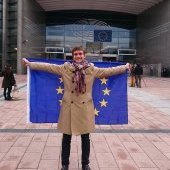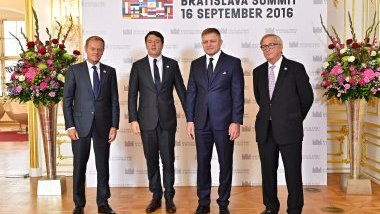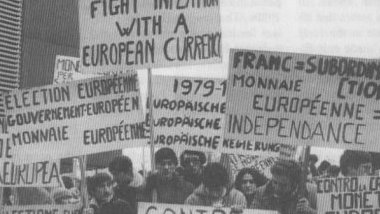Legally not a federal state, but politically...
Most of us will have heard the word “federation” in political and media discourse on the EU. It’s not an easy word, though. “There is no broadly accepted definition for what a federation is”, Raunio remarks. “We can always define independent states, such as Germany or the United States or Canada, as being federal due to their institutional structures. But given that the EU is not a state and will probably never be one, terms like ‘federation’ or ‘federalism’ can be used for different purposes by politicians motivated by different ideological objectives.” However, federalism still smacks of centralisation in the EU context, which makes even pro-EU politicians hesitant to explicitly talk about federalism, but instead opt for expressions such as “ever closer union”.
Arguably the EU has characteristics of a federation. Raunio notes that the EU is in many ways what is called a “regulatory state” in scholarly literature - the EU adopts legislation, while lower levels of administration such as member states implement it and bear the costs. In the form of the treaties, the EU de facto has a constitution, and it has competences in a wide range of policy areas. But nevertheless Raunio says that the EU will probably never be a state.
“I think the only thing that really separates the EU from being a state is the fact that it quite simply is not a state. Legally speaking it’s still a voluntary agreement between individual countries that are states and recognised as such by the UN, the international community”, Raunio explains. But that may not be all that important in practice. “Of course legal scholars may emphasise that, but in the eyes of a political scientist the EU is a political system just like Finland or the United States are. These days when you do research on the EU and its politics, scholars quite extensively draw from literature on other federal polities. That tells you that a lot of scholars see the EU operating very much like a federal state even if it’s not a state of its own.”
‘When Macron talks about reforming the EU, that’s cheap talk’
One thing where the EU differs from (other) federations is the mechanism of changing the constitution. In the EU, treaty change requires unanimity from member states, while Raunio’s comparative analysis in the Liittovaltiot book shows that such a strict requirement is exceptional among the world’s federal systems. Against this backdrop, Raunio understands the sense of treaty fatigue that has prevailed since the complicated process leading up to the Lisbon Treaty.
In all fairness, though, the United States is a prime example of a federation where changing the constitution is not simple at all, as Raunio points out. Decisions of the US Supreme Court have conferred more power to the federal level, however, for instance in the decision on same-sex marriage. “You find a very similar logic in the EU with the Court of Justice, so again you have a clear similarity between the EU and federal states”, Raunio says. Federations historically have a tendency towards centralisation, and this is one aspect of it.
In the Liittovaltiot book, Raunio makes a bold proposal: the EU should adopt the Swiss model for constitutional change. In Switzerland, after the approval of the lower and the upper house of the Parliament, a “double majority”, that is the approval of the majority of cantons and that of the Swiss people, measured by referendum, is required to change the constitution. In the EU the corresponding organs and electorates would respectively be the European Parliament, the Council of Ministers, and the member states. In the book, however, Raunio estimates that such a mechanism would in fact make constitutional change harder, but the key benefit would be a popular mandate for the treaties.
However, in the interview and the book alike Raunio notes that the member states aren’t willing to give up their right to a veto. “So, for example when Macron now talks about reforming the EU, that’s cheap talk because he knows that it requires everybody on board and that it will be difficult”, Raunio notes. “But then again, I also do believe that if you have a large enough majority in the EU, let’s say twenty to twenty-five countries behind [a proposal], you can always find a way to buy the others on board, but nonetheless it’s difficult.”
Perhaps we can already look at the EU as a federation of its own kind, but large-scale reforms towards an “ever closer union” will remain difficult. Then again, thus far the seemingly universal trend towards stronger competences at the central level has always manifested in the EU and still does, as will be discussed in the next part of the interview.
This was the first part of a series of three articles based on the interview. In the next part, we’ll discuss the relationship between the Commission and the European Council, and leadership in the EU. It will be published on June 11.
Resources
Raunio, T. (2002) Liittovaltiot: Federalismin teoria ja arki. Helsinki: Gaudeamus.





Follow the comments: |
|
